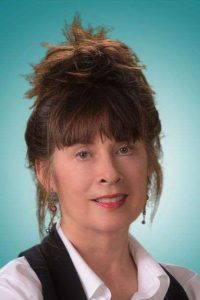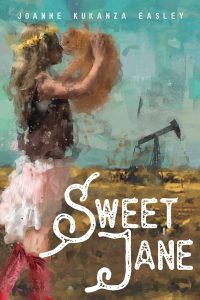Inspiration and Options
 The inspiration for my upcoming novel, SWEET JANE, came from two main sources. One Saturday morning at a writing group held at a café in Austin, Texas, the first seed was planted. That morning’s writing prompt—she didn’t get that far—sparked an idea. I closed my eyes and pictured a heartbroken teenage girl standing on the side of a highway with her thumb out, determined to hitchhike away from her troubled home. The first question I asked was: where was she going?
The inspiration for my upcoming novel, SWEET JANE, came from two main sources. One Saturday morning at a writing group held at a café in Austin, Texas, the first seed was planted. That morning’s writing prompt—she didn’t get that far—sparked an idea. I closed my eyes and pictured a heartbroken teenage girl standing on the side of a highway with her thumb out, determined to hitchhike away from her troubled home. The first question I asked was: where was she going?
She didn’t get that far.
Innumerable queries followed: What event triggered her leaving? Would anyone miss her? Why did no one stop her from leaving? What might befall her on this journey? Where would she live? Who would she meet along the way?
After much thought and reflection, I began to answer those questions and the character, and her story developed in my mind. I named her Jane; it suited her. Over a period of months, I came to know Jane. Her physical appearance, habits, likes and dislikes, and flaws were revealed and made her come to life. I populated her story with a dysfunctional family, unfortunately few friends, and more than one tragic incident.
The pivotal events in Jane’s story revolve around funerals—my second source of inspiration. I believe that when one writes, a cathartic exploration of past traumas is often used as a jumping-off point.
As a child and teen, my life was deeply affected by funerals I attended, funerals that happened way too early or should not have happened at all. A childhood friend taken by a cruel illness, a schoolmate dying in a horrific car accident that might have been a suicide, a friend’s parent taken suddenly, a drug overdose, and a fatal brain aneurysm, all those events marked my soul, and at some level, I knew I would write about them someday.
So, I applied the feelings and memories of those funerals to Jane’s life and developed a loosely outlined story of a girl whose life takes a new trajectory after the death, or in one case, near-death of a significant figure in her world.
While writing the novel, I believe I processed the tragedies that haunted me; however, my character Jane stubbornly avoided her own losses and built a rickety structure of a personal myth. Jane might have looked successful to outsiders but concealing her history from her husband and dodging the pain of her past created inner turmoil. The death of her mother led to a collision of her carefully crafted exterior with the internal conflicts arising from her broken childhood, doubts about her suitability for marriage, and indecision about her career.
 When I had difficulty with a passage in the book, I used physical activity to open my mind to new possibilities. Like Jane, I swim a mile-and-a-quarter three times a week, and many of my breakthroughs came while I was churning through the lap lane at my gym. Although I never jumped out of the pool to begin writing, as soon as I got to the locker room, I scribbled my insights on whatever paper came to hand and drove home to incorporate those ideas into the story. Other “aha” moments came while walking my dogs, or even when asleep. I have climbed out of bed to write dialogue or plot points.
When I had difficulty with a passage in the book, I used physical activity to open my mind to new possibilities. Like Jane, I swim a mile-and-a-quarter three times a week, and many of my breakthroughs came while I was churning through the lap lane at my gym. Although I never jumped out of the pool to begin writing, as soon as I got to the locker room, I scribbled my insights on whatever paper came to hand and drove home to incorporate those ideas into the story. Other “aha” moments came while walking my dogs, or even when asleep. I have climbed out of bed to write dialogue or plot points.
I contemplated many possibilities for the book’s resolution. Creating a list of options, from the pedestrian to the outlandish, I thought long and hard about what felt right. This is an exercise I highly recommend. The unused ideas can lead to more stories.
If the muse abandons me entirely, working on a jigsaw puzzle or sudoku helps focus my brain from a different perspective, and access my creativity. After a session, I often find that I have discovered the next section of the story.
My critique partners have been invaluable in helping me become a better writer. Countless times, their comments, questions, and insights have led to connections I missed or threads that could be woven together to create a more cohesive story. These fellow writers are another source of inspiration.
My childhood was nothing like Jane’s broken one, although we share a love of playing outdoors with a boy in vacant lots, hunting wildlife, and imagining a future as an explorer. Writers in my critique groups have asked me if I am Jane, and I assure the questioner I am not. To me, those questions are a compliment, indicating that I’ve created a believable character and story. While Jane and I both swim, she is a cat person, and I love dogs.
—
SWEET JANE is available now from Amazon, Barnes & Noble, and from the publisher.
—
Joanne Kukanza Easley, born in Chicago, Illinois, has adopted Texas as her home. She lives in the Texas Hill Country on a small ranch with her husband, three rescue terriers, and abundant wildlife. Retired from a career in nursing—with dual specialties in the cold, clinical operating room, and the intense, emotional world of psychiatric nursing, she devotes her time to writing fiction. Her debut novel, SWEET JANE, will be published on March 19, 2020 by Black Rose Writing, a small independent publisher. She is hard at work editing her next novel, JUST ONE LOOK, set in her native Chicago, and looking forward to her next project, LAUREN EATON, based on a character in SWEET JANE.
https://www.facebook.com/J.Easleywrites/
https://tinyurl.com/sweet-jane-on-amazon
SWEET JANE
2019 Faulkner/Wisdom Writing Award Finalist
A drunken mother makes childhood ugly. Jane runs away at sixteen, determined to leave her fraught upbringing in the rearview. Vowing never to return, she hitchhikes to California, right on time for the Summer of Love. Seventeen years later, she looks good on paper: married, grad school, sober, but her carefully constructed life is crumbling.
When Mama dies, Jane returns for the funeral, leaving her husband in the dark about her history. Seeing her childhood home and significant people from her youth catapults Jane back to the events that made her the woman she is. She faces down her past and the ghosts that shaped her family. A stunning discovery helps Jane see her problems through a new lens.
Category: Contemporary Women Writers, How To and Tips






























